India Connection
Sultana N. Nahar
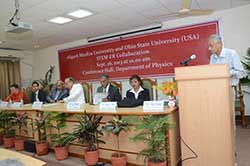
Figure 1. Session on initiation of the OSU-AMU Center of Excellence for STEM Education and Research. L to R: Nick Booker (Indogenius, associated with the project); Ratnish Bhattacharya (OSU-India Gateway Office); Deputy Vice-Chancellor (ProVC) Brigadire Ahmed (AMU); Vice-Chancellor (VC) General Shah (AMU); Professor A.K. Pradhan (OSU); Dr. Sultana Nahar (OSU); Professor Wasi Haider (AMU)
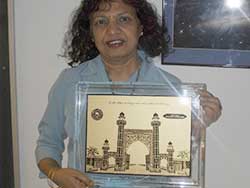
Figure 2. Sultana Nahar receives the prestigious Bab-e-Syed AMU memento symbolizing the gate to the knowledge learning place with the line of knowledge being spread worldwide like rain.

Figure 3. Sultana Nahar receives a recognition plaque from the Indian University Grant Commission (UGC) delegate.

Figure 4. Physics faculty and student prize winners with the Vice Chancellor, the Deputy Vice-Chancellor, the Dean of Faculty of Science, the Physics Chair, the Convener, and Dr. Sultana Nahar.
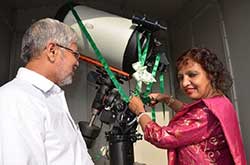
Figure 5. Ribbon cutting inauguration for the new 14-inch telescope.
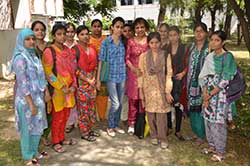
Figure 6. Presentation “Women Stars in Science.”
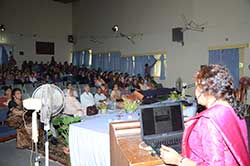
Figure 7. With students after presentation.
In September 2013 a delegation from Ohio State University (OSU) went to Aligarh Muslim University (AMU) located in Aligarh, a city of over 1,000,000 population in Uttar Pradesh state about 130 km southeast of New Delhi. AMU, one of India’s leading universities, has 30,000 students and a large, beautiful campus. The main purpose of our visit was to initiate the STEM (Science, Technology, Engineering, Mathematics) project “Training the Next Generation of STEM Faculty at Higher Education Institutions in India,” one of the initial awards under the Obama-Singh 21st Century Knowledge Initiative described in our last newsletter.
Although India is known for producing many intellectuals, the large population of the country makes the fraction low. The country has about 300,000 faculty members for existing and upcoming institutions of higher education for about 150 million students. The education system lacks infrastructure for higher education.
A treaty was signed in 2009 by the US president Barack Obama and Indian Prime Minister Man Mohan Singh to select eight Obama-Singh 21st Century Knowledge Initiative awards for five years under the US India Education Foundation. Four awards will be for projects led by US universities and four led by Indian universities. The aims are to strengthen collaboration and build partnerships between American and Indian institutions of higher education in priority fields with the objectives of cultivating educational reform, fostering economic growth, generating shared knowledge to address global challenges, and developing junior faculty at Indian institutions of higher learning.
I have had connections with AMU since introducing the STEM program in physics in 2011 (http://www.aps.org/units/fip/newsletters/201202/nahar.cfm). I worked with Anil K. Pradhan (Principal Investigator) and OSU to write the proposal and after its award became the project Associate Director and Chief Liaison Officer. The visit to India by the OSU team to initiate the project was covered in a number of Indian newspapers and was welcomed by all AMU STEM departments. Sessions and discussions cleared up issues in the new program due to differences in the educational systems between our two countries.
The program introduces a dual-degree program for senior Ph.D. students in STEM. The curriculum for the MEd-STEM in Education and Research (ER) degree was approved by the Council of Academic Affairs at OSU in December. The curriculum has equal emphasis on world-class faculty training and state-of-the art research at OSU. The novel component is that an advanced Ph.D. student will spend two years in learning teaching skills at OSU, carry out teaching field work at AMU and at the same time will be involved, along with his/her AMU advisor, in research projects at OSU that matches the student’s own Ph.D. research project. In addition to their AMU Ph.D. they will finish with a MEd- STEM degree from OSU. The research collaboration begun under the program can continue as long as desired. Any Indian Ph.D. student can enroll in the program through the OSU-AMU Center of Excellence. Both OSU and AMU are optimistic for the success of the project.
Because of its unique nature and addressing directly current educational needs, the new STEM ER program is already creating interest in other universities. I have been invited to visit the University of Kashmir at Srinagar to present physics seminars and discuss possible participation in the MEd-STEM ER program through grants from Indian government agencies. OSU alumni in India are also coming forward by helping to form a network to advertise the importance of the project. The startup of the program was greatly appreciated by the AMU Duty Society which jointly with the Indian Society of Industrial and Applied Mathematics (ISIAM) held an evening reception for Anil Pradhan and myself. In public speeches STEM ER issues were discussed and the possible formation of a STEM research center in Delhi was proposed. The reception held in the Delhi Habitat Center was attended by delegates from several educational institutions and agencies, including Jamia Millia Islamia University, Sharda University, Guru Nanak Dev University, Vidya College of Engineering and Technology, Gautam Budha University and the Indian University Grant Commission (UGC). Both Pradhan and I received recognition plaques. Formulation of the plan for the research center is in progress and will continue during our 2014 visit in India.
During this visit to India we also made progress on organizing the conference ALIGARH NANO-IV International 2014 (http://www.amu.ac.in/pdf/conf/9996.pdf) to be held in the Aligarh Nanotechnology Center of Excellence during March 8-10, 2014. Professor Alim Naqvi, the founder of the Aligarh Nanotechnology Center, and the scientific organizing committee are very interested in having speakers from the US to present the latest scientific advances.
The Aligarh Center is carrying out productive research in solar cells, graphene materials, and plasma ablation. It has invented its own products:, in cosmetics — Nano Anti-Blemish Solution; Nano Skin Cleansing Solution; Nano Skin repair and anti-aging wrinkle cream; in cleaning — Nano surface cleaner and Nano-Glass cleaner; in medical use — Nano Antimicrobial cream and Nano-Burn cream. They also have innovated technology in synthetic diesel production and in water purification. Along with several Indian agencies OSU is a sponsor of the conference through the Obama-Singh award; I am one of the conveners of the conference, particularly for non-Indian speakers.
The Department of Physics scheduled a recognition ceremony for teaching, research, and student excellence during my visit to Aligarh. Two faculty members, Professors Sajjad Athar and Nasra Neelofar, received prizes for best teaching, one faculty member, Professor Sabbir Ahmad, as the best research advisor, Rafi Alam (male) and Huma Haider (female) best Ph.D. students, and Wadut Shaikh (male) and Aiman Fatima (female) best undergraduate students at the ceremony. Two best master’s degree students also received awards instituted by the AMU alumni association. The large conference room was filled with an enthusiastic audience of students, researchers, and faculty members and past faculty members who wanted to share the occasion. The prizes are under a STEM program in Physics that I founded in AMU in 2011. Teachers are recognized for teaching and research guidance and students nominate them based on their learning experiences. Recognition brings a better atmosphere for interaction between the teachers and students.
The Physics Department was also scheduled to inaugurate its new computerized 14-inch (35 cm) telescope during our visit. It replaces an old 8-inch (20 cm) manual telescope given by Queen Victoria. The new telescope with a CCD camera should be able to detect objects with wavelength range from ultra-violet 300 nm to infra-red 1000 nm. Space fascinates minds and astronomy is a very popular subject. I gave an astrophysics seminar on neon abundance in astronomical objects to a full conference room on the last day of our visit.
During the India visit, I also took the opportunity to speak to women in science and invited them to join the International Society of Muslim Women in Science (ISMWS). My visit to Abdullah Women’s college of AMU was arranged by the principal where science students attended my presentation “Women Stars in Science” in its large auditorium. The students were particularly interested and curious about the scope of higher education and they gave me a long applause. As I was walking out of the auditorium they gathered around with happy faces and some even asked for an autograph.
I also met a physics student who has been an ISMWS member for a few years. She remained close by for all the events in the 3 days I was at Aligarh and later sent me an email expressing how she became newly motivated by my visit. This was one best rewards I received in my 2013 India visit.
Dr. Sultana N. Nahar, a Bangladeshi American physicist is a research scientist in the Department of Astronomy at Ohio State University and an elected member of the FIP Executive Committee. She has published extensively on radiative and collisional atomic processes in astrophysical and laboratory plasmas, and also worked on dielectronic satellite lines, theoretical spectroscopy, and computational nanospectroscopy for biomedical applications. Sultana Nahar is the winner of the APS 2013 John Wheatley Award. Email: nahar@astronomy.ohio-state.edu
Disclaimer - The articles and opinion pieces found in this issue of the APS Forum on International Physics Newsletter are not peer refereed and represent solely the views of the authors and not necessarily the views of the APS.
